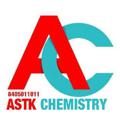Question 1 :
In which of the following pairs, the two species are isostructural?
Question 2 :
Molecular {tex} \mathrm { AB } {/tex} has a bond length of {tex}1.61 \ {\text{Å}}{/tex} and a dipole moment of {tex}0.38 \mathrm D{/tex}. The fractional charge on each atom (absolute magnitude) is: {tex} ( \mathrm { e } _ { 0 } = 4.802 \times 10 ^ { - 10 } \text { esu) } \quad {/tex}
Question 3 :
Which of the following statements is correct in the context of the allene molecule, {tex} \mathrm {C_3H_4} {/tex}?
Question 4 :
Assertion: Ionic bonds are directional in nature whereas covalent bonds are non-directional.
Reason: According to orbital overlap concept, the formation of a covalent bond between two atoms results by pairing of electrons present in the valence shell having same spins.
Question 5 :
The bond dissociation energy of {tex} \mathrm { B } - \mathrm { F } {/tex} in {tex} \mathrm { BF } _ { 1 } {/tex} is {tex} 646 \mathrm { kJ } \mathrm { mol } ^ { - 1 } {/tex} whereas that of {tex} \mathrm { C } - \mathrm { F } {/tex} in {tex} \mathrm { CF } _ { 4 } {/tex} is {tex} 515 {/tex} {tex} \mathrm { kJ } \mathrm { mol } ^ { - 1 } . {/tex} The correct reason for higher {tex} \mathrm { B } - \mathrm { F } {/tex} bond dissociation energy as compared to that of {tex} \mathrm { C } - \mathrm { F } {/tex} is
Question 7 :
Amongst $LiCl$, $ BeCl_2,\ MgCl_2 $ and $RbCl$ the compounds with greatest and least ionic character, respectively are:
Question 10 :
In an ionic compound $A^+$ $X^-$ the degree of covalent bonding is greatest when :
Question 12 :
The ratio of number of lone pairs in $NH_3$, $H_2O$ and $XeF_{2}$ is :
Question 14 :
The bond dissociation energy of {tex} \mathrm { B } - \mathrm { F } {/tex} in {tex} \mathrm { BF } _ { 3 } {/tex} is {tex} 646 \mathrm { kJ } \mathrm {\ mol } ^ { - 1 } {/tex} whereas that of {tex} \mathrm { C } - \mathrm { F } {/tex} in {tex} \mathrm { CF } _ { 4 } {/tex} is {tex} 515 \mathrm { kJ } \mathrm { \ mol } ^ { - 1 } . {/tex} The correct reason for higher {tex} \mathrm { B } - \mathrm { F } {/tex} bond dissociation energy as compared to that of {tex} \mathrm { C } - \mathrm { F } {/tex} is
Question 18 :
Solubility of $NaCl$, $Na_2SO_4$ and $Na_3PO_4$ in water in increasing order is :
Question 19 :
Which of the following family form negative ions in an ionic bond?
Question 20 :
$KF$ combines with $HF$ to form $KHF_2$. The compound contains the species:
Question 21 :
Which of the following is/are misconception(s) associated with resonance?<br>(i) The molecule exists for a certain fraction of time in one cannonical form and for other fractions of time in other cannonical forms. <br>(ii) The cannonical forms have no real existence. <br>(iii) There is no such equilibrium between the cannonical forms.<br>
Question 23 :
{tex} _ { 1 } \mathrm { H } ^ { 2 } + _ { 1 } \mathrm { H } ^ { 2 } \longrightarrow _ { 2 } \mathrm { He } ^ { 3 } + _ { 0 } \mathrm { n } ^ { 1 } {/tex}<br>The above nuclear reaction is called<br>
Question 25 :
Assertion: Sodium chloride ($NaCl$) is a stable ionic solid.
Reason: $NaCl$ has high lattice enthalpy.
Question 26 :
Which of the following sets of characteristics leads to the increase in solubility of ionic substances?
Question 27 :
{tex} \mathrm { CaO } {/tex} and {tex} \mathrm { NaCl } {/tex} have the same crystal structure and approximately the same ionic radii. If {tex}\mathrm U {/tex} is the lattice energy of {tex} \mathrm { NaCl } {/tex}, the approximate lattice energy of {tex} \mathrm { CaO } {/tex} is
Question 28 :
Which of the following methods is used for measuring bond length?
Question 32 :
Ionic solids do not conduct electricity, but will when the temperature is raised above the melting point. Which of the following explains why this is possible?
Question 33 :
The element X reacting with chlorine forms a water soluble compound having high melting point. Element X is:
Question 34 :
Which of the following is not a property of an ionic compound?
Question 35 :
The dipole moments of diatomic molecules AB and CD are {tex} 10.41 \mathrm { D } {/tex} and {tex} 10.27 \mathrm { D } {/tex}, respectively while their bond distances are {tex}2.82{/tex} and {tex} 2.67 \mathrm {\text{Å}} {/tex}, respectively. This indicates that
Question 36 :
Dipole moment of {tex} \mathrm { H } _ { 2 } \mathrm { O } {/tex} is {tex} 1.85 \mathrm { D } {/tex}. If the bond angle is {tex} 105 ^ { \circ } {/tex} and {tex} \mathrm { O } - \mathrm { H } {/tex} bond length is {tex} 0.94 {\text{Å}}{/tex}, what is the magnitude of charge on the oxygen atom in water molecule?
Question 37 :
The conductivity of the metal decreases with increase in temperature because




























